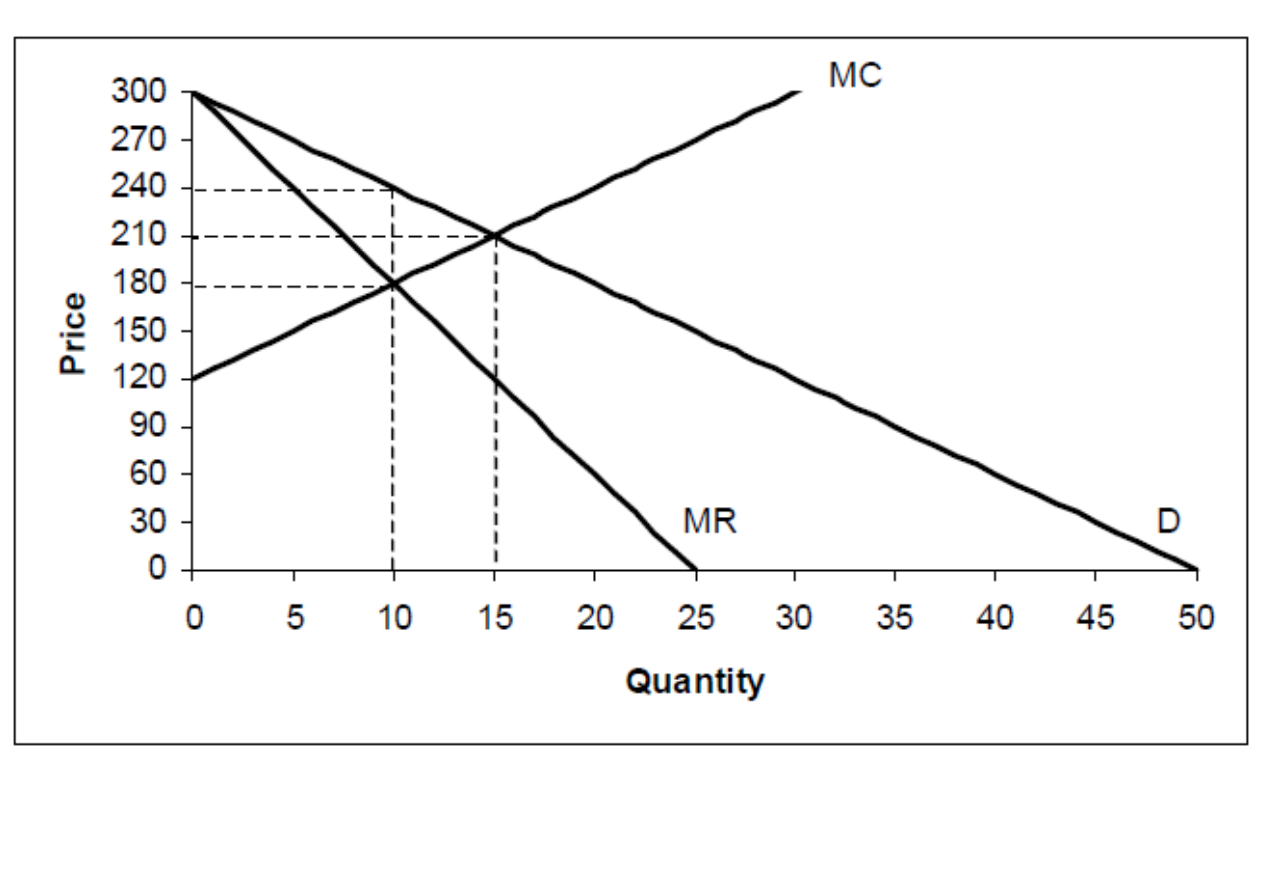Question
1)Suppose demand for a monopolist's product is given by P=4008Y while the monopolist's marginal cost is given by MC=80. A. Derive the marginal revenue curve.
1)Suppose demand for a monopolist's product is given by P=4008Y while the monopolist's marginal cost is given by MC=80.
A. Derive the marginal revenue curve. Sketch and label the marginal revenue curve, demand curve and marginal cost curve.
B. What are the profitmaximizing quantity of output and price for this monopolist? What are the competitive equilibrium output and price? Clearly show and label them in the diagram.
C. Assume that there is a fixed cost of 200 and the only additional cost is variable in Y and it is represented in the marginal cost function. What is the average cost function?
D. Is this a natural monopoly? If so, discuss two ways how the government can regulate the industry to be more efficient. Calculate the loss incurred by the monopoly at the efficient output level and discuss how to calculate the efficient output/price level can be determined where the firm is making zero profit. If not, discuss how much the government must subsidize the monopolist for it to produce at the market efficient level.
2)Jane drinks Beer (B) only when she consumes bags of Chips (C) Jane always consumes two bottles of beer along with a bag of chips. They are perfect complements for Jane. Price of a bottle of beer is $2 while the price of a bag of Chips is $2. Assume you can consume fractions or decimals of each product. Jane's income is $50.
A. Set up Jane's utility function. Draw and label two of Jane's indifference curves.
B. Calculate the number of {B, C} pair Jane consumes and corresponding level of utility for Jane, as setup in part A). What is the intuition behind the solution? Draw and label the budget constraint, solve for Jane's optimal choice and present your answer graphically.
C. Suppose the quantity discount is imposed on Beer. The price of Beer is $2 up to 10 bottles of Beer, and $1 from the 10thbottle of Beer and up. How does her choice and budget constraint change? What happens to her utility? (Present your answer graphically as well).
3)A firm has the production function Q=LK. The firm initially faces input prices w1= $1 and r = $1 and is required to produce Q=100 units. Later the price of labor w goes up to w2= $9 and the price of capital r remains unchanged.
A. Graphically represent the situation. Make sure you write down equations for isoquant curve, isocost lines.
B. Find the optimal input combinations for each set of prices.
4)According to the following diagram, what is the consumer surplus and producer surplus under perfect competition and under monopoly? What is deadweight loss under monopoly?

Step by Step Solution
There are 3 Steps involved in it
Step: 1

Get Instant Access to Expert-Tailored Solutions
See step-by-step solutions with expert insights and AI powered tools for academic success
Step: 2

Step: 3

Ace Your Homework with AI
Get the answers you need in no time with our AI-driven, step-by-step assistance
Get Started


